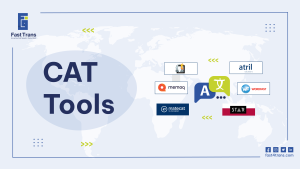Arabic Internationalization vs. Arabic Localization, Do you know the difference? Arabic Internationalization sets the stage for global compatibility by designing flexible systems that support Arabic’s unique needs, such as right-to-left layouts, text expansion, and regional formats for dates and numbers. It ensures platforms like Facebook or Amazon are technically ready to adapt seamlessly to Arabic-speaking audiences. Arabic Localization, however, dives deeper, customizing every element—language, visuals, layouts, and cultural nuances—to resonate with local users. From adjusting e-commerce measurements to tailoring fast-food menus with halal options, localization transforms global products into culturally relevant experiences, ensuring they connect authentically with Arabic-speaking markets. Together, these processes bridge global reach and local relevance.
Arabic Internationalization vs. Arabic Localization
Arabic Internationalization refers to the initial process of preparing products, services, and software to function in different markets internationally and cater to international audiences who speak Arabic and function in different cultural contexts.
On the other hand, Arabic Localization is a process that usually comes after Arabic internationalization. It adapts the brand’s products and services, or any other textual or non-textual elements to fit into an Arabic-speakers local market.
Example of Internationalization
Examples of internationalization include Facebook a social media platform that can support languages worldwide.
Other examples are e-commerce platforms like Amazon, WordPress, Ali Baba, and Airbnb.
Example of Localization
Moreover, an example of Arabic localization is Arabic Website localization. When an e-commerce website displays items in different measurements based on the location of the customer. An e-commerce website in the US will display measurements in pounds, and inches. At the same time, one in Saudi Arabia will display the same measurements in centimeters and kilograms.
Let’s dig more into this
i18n vs l10n
What is I18n?
Internationalization is abbreviated as “i18n,” I18n refers to the 18 letters between the first letter I, and the final one n.
What is L10n?
Localization is abbreviated as “L10n”, typically, L10n refers to the 10 letters between the initial letter L, and the final one N.
Where is Arabic Internationalization (i18n) Used?
When businesses launch websites or mobile applications targeting Arabic-speaking audiences, they do so with internationalization in mind. Instead of hardcoding languages into the software, they use Unicode to create a flexible structure that can support Arabic and other languages seamlessly.
In the case of Arabic, i18n replaces hardcode with placeholders that dynamically retrieve the Arabic text without requiring coding changes. For example, to display the word “welcome” to an Arabic user, the code might look like this:
confirm(t(title)); instead of confirm(“Welcome!”); or confirm(“مرحبا!”).
Arabic internationalization is not only about translating a brand into Arabic but also involves several technical aspects specific to the language, such as text expansion, date formats, and right-to-left (RTL) layouts.
User Interface (UI):
When adapting your website or app for Arabic, it’s important to account for text expansion. Arabic words and phrases can take up more or less space than their English equivalents. If the UI is not flexible enough, translated text may appear cluttered or misaligned.
Date and Time Formats:
Arabic-speaking countries often use formats like DD/MM/YYYY or the Hijri calendar, and time is commonly displayed in a 24-hour format (e.g., 13:00) rather than AM/PM. Adapting to these formats ensures the application feels natural to Arabic users.
Right-to-Left (RTL) Languages:
This is critical for UI design when working with Arabic. Right-to-left text requires not only reversing the text direction but also adapting the entire layout. Elements such as navigation bars, icons, and buttons must mirror their positions to align with Arabic reading habits.
By considering these factors, Arabic internationalization ensures a seamless and culturally appropriate experience for Arabic-speaking users.
Read more: What is Software Internationalization?
Where is Localization (L10n) Used?
Arabic localization processes involve the translation and customization of a product to meet the contextual and linguistic requirements of Arabic-speaking cultures. This includes adapting date and time formats, layout, design, cultural references, colors, symbols, images, currencies, measurement units, numerical formats, products, and models, among many other details.
Arabic Localization in the Food Business
One good example of Arabic localization is seen in the food business. Food giants that operate in Arabic-speaking regions manage to sustain their brand image and identity while simultaneously catering to local tastes by customizing menus and food options according to the culture.
For example, Subway in the Middle East features sandwiches that appeal to Arab customers, such as chicken shawarma and falafel sandwiches. Similarly, global fast-food chains adapt their offerings to align with halal requirements and local culinary preferences, making their products more relatable to Arabic-speaking consumers.
Arabic Internationalization i18n best practices
- Keep in mind the factor of text expansion and contraction.
- Store images, audio files, and other resources separately from your code so that they can be easily replaced or modified for Arabic.
- Use separate resource files for textual elements that require Arabic translation.
- Keep in mind the different date and time formats; avoid hard-coding dates and numbers.
- Align the user interface UI with right-to-left RTL languages.
Arabic Localization (L10n) best practices
- Create content with Arabic localization in mind. Early in the product design phase, it’s best to maintain a mindset that smoothens the localization process that follows.
- We all have heard of things being lost in translation, and the same is valid for localization. The essence of your brand can be lost in localization’ therefore it is crucial to ensure the same smooth user experience no matter what.
- Hire native Arabic localizers who are up to date with the changing events in an Arabic-speaking people culture.
- Make use of machine translation (MT) and a suitable translation management system to ease communications between team members.
Let’s sum up the most important differences between those terms in a final note:
| Arabic Internationalization | Arabic Localization |
| i18n | L10n |
| Handled by software developers, and software engineers | Handled by Arabic linguistics, translators, and localizers, but can involve collaboration with the marketing team and content creators, visual artists, and designers. |
| A process in software development that allows for it to support hundreds of languages through Unicode.
It’s a basic and flexible software layout that allows for a smooth localization process. | The keyword in localization is ‘customizing’. Localization goes beyond the literal translation of meaning from one language into another. It is very loyal to making the content appeal to the Arabic-speaking audience. It appropriates everything from design, images, colors, layout, translation, symbols, date and time format. |
| Comes before localization. | Always follows internationalization. |
| Involved in: -Software development-e-commerce websites-Social media platforms-Mobile applications | Involved in: –Video games–Applications–Websites-Advertisements-Product (labeling, copywriting, and packaging) |
Conclusion
Arabic Internationalization vs. Arabic Localization, Know the difference. Arabic Internationalization is the foundational step in preparing digital platforms and products to support Arabic-speaking audiences across global markets. It focuses on creating a flexible, adaptable framework that accommodates the Arabic language and cultural norms without embedding language-specific content directly into the system. This includes technical aspects like supporting right-to-left (RTL) text layouts, adapting to Arabic text expansion, and accommodating region-specific formats for dates, times, and numbers. By leveraging Unicode and dynamic placeholders for text, businesses ensure their software can seamlessly switch to Arabic without additional coding changes. For instance, platforms like Facebook and Amazon illustrate internationalization by enabling multilingual compatibility while maintaining a consistent global structure.
Arabic Localization, in contrast, tailors products, services, and content specifically to the preferences and cultural nuances of Arabic-speaking regions. This process delves beyond translation to incorporate local cultural elements, such as adjusting UI designs for RTL languages, modifying color schemes, and aligning imagery and content with local customs. Localization also addresses practical details, such as converting units of measurement, currencies, and even culinary preferences, as seen in fast-food chains offering halal or regional menu items. While internationalization lays the groundwork, localization refines the product to resonate deeply with Arabic-speaking users, making it indispensable for creating an authentic and engaging user experience.











